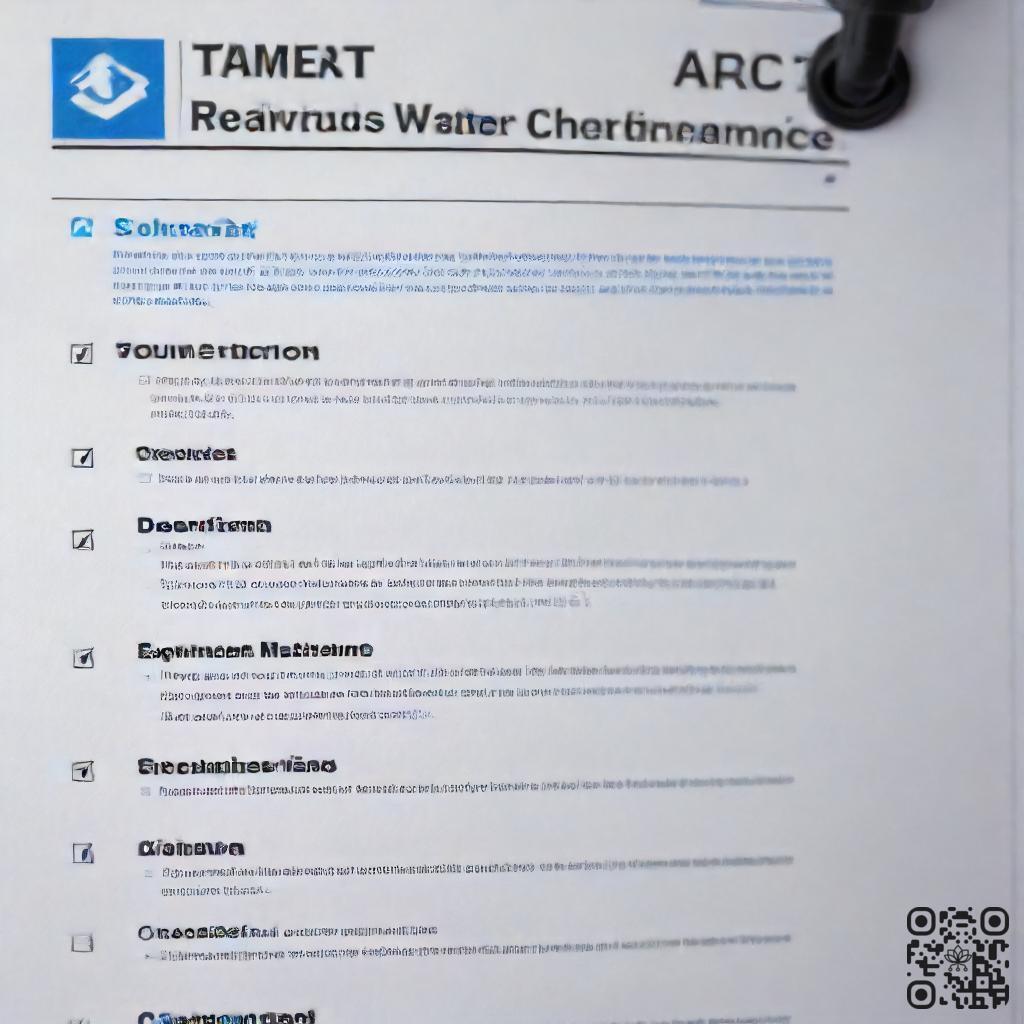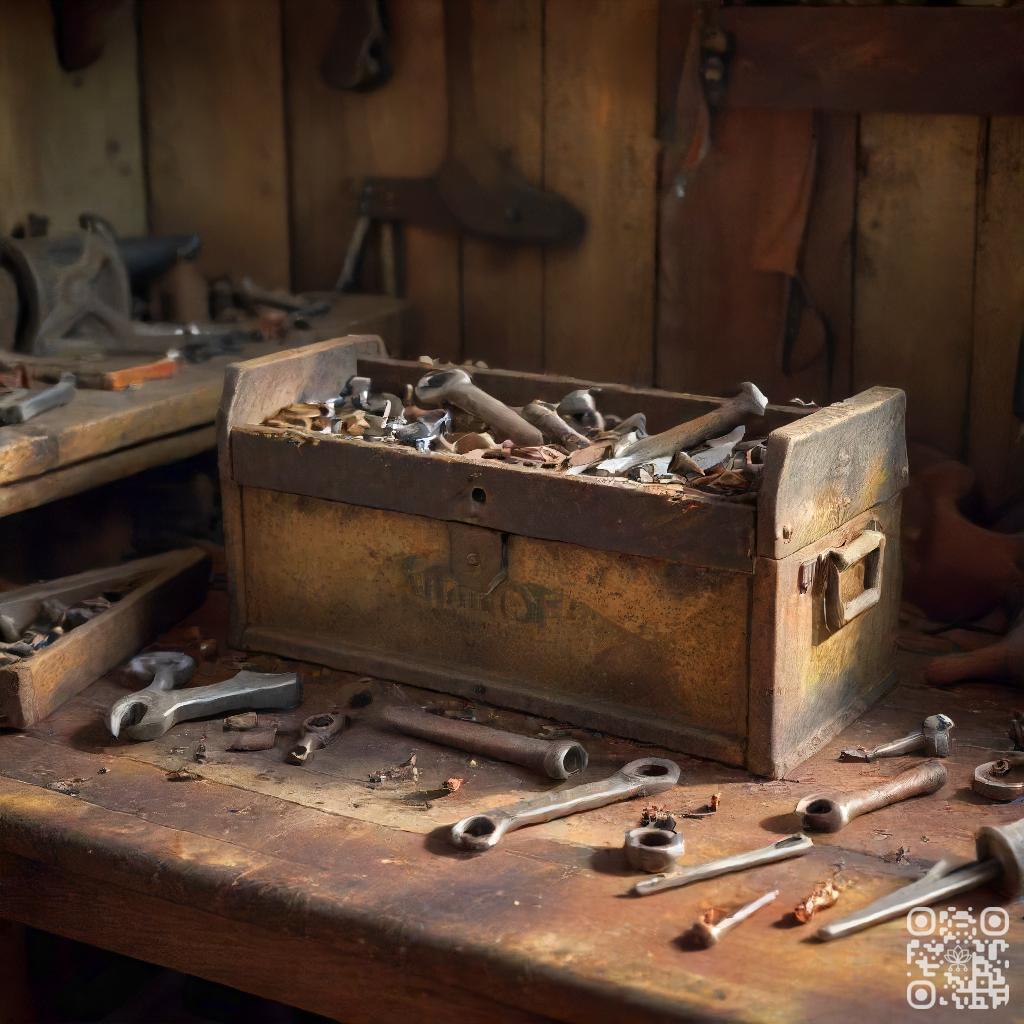
II. Regular maintenance, including flushing the tank and checking the anode rod, can help prevent sediment buildup and extend the life of the water heater.
III. Following a sediment removal and water heater maintenance checklist can make the process easier and ensure that all necessary steps are taken to keep the water heater functioning properly.
In order to ensure the optimal performance and longevity of your water heater, pivotal to regularly remove sediment buildup and perform routine maintenance tasks. This checklist will guide you through the necessary steps to keep your water heater running smoothly.
By regularly removing sediment, you can prevent clogs and improve the efficiency of your water heater. Additionally, performing maintenance tasks such as checking the pressure relief valve and flushing the tank will help extend the lifespan of your water heater.
Follow this checklist to keep your water heater in top condition.
Sediment Removal
1. What is sediment buildup?
Sediment buildup refers to the accumulation of solid particles, such as sand, dirt, and minerals, in the water heater tank. Over time, these particles settle at the bottom of the tank, leading to sediment buildup.
2. Signs of sediment buildup
There are several signs that indicate the presence of sediment buildup in your water heater. These include:
- Reduced heating efficiency: Sediment acts as an insulator, making it harder for the heating element to warm the water.
- Noisy operation: Sediment can cause rumbling or popping sounds as the water heater heats up.
- Fluctuating water temperature: Sediment can disrupt the flow of hot water, resulting in inconsistent temperatures.
3. How to remove sediment from the water heater
To remove sediment buildup from your water heater, follow these steps:
- Turn off the power: Before performing any maintenance, turn off the power supply to the water heater.
- Drain the tank: Connect a hose to the drain valve and empty the tank completely.
- Flush the tank: Open the cold-water supply valve to flush out the remaining sediment. Allow the water to run until it appears clear.
- Close the drain valve: Once the tank is flushed, close the drain valve and remove the hose.
- Refill and restart: Turn on the cold-water supply and wait for the tank to fill up. Finally, turn on the power supply to restart the water heater.
4. Frequency of sediment removal
The frequency of sediment removal depends on various factors, including the hardness of your water and the quality of your water source. In general, it is recommended to flush your water heater and remove sediment at least once a year. Conversely, if you notice any signs of sediment buildup or experience issues with your water heater’s performance, it is advisable to take immediate action and remove the sediment.
| Frequency | Recommended |
|---|---|
| Once a year | Yes |
| Signs of sediment buildup | Yes |
Water Heater Maintenance Checklist
Regular maintenance of your water heater is essential to ensure it functions efficiently and lasts for a long time. Follow this checklist to keep your water heater in top shape:
1. Inspect the pressure relief valve
Start by checking the pressure relief valve, which is responsible for releasing excess pressure from the tank. Make sure it is working properly and not leaking. If you notice any issues, consult a professional to have it repaired or replaced.
2. Check the anode rod
The anode rod is a crucial component that helps prevent corrosion inside the water heater tank. Inspect the rod for any signs of wear or corrosion. If it is heavily corroded, it may need to be replaced to maintain the integrity of the tank.
3. Flush the water heater tank
Over time, sediment and minerals can accumulate at the bottom of the water heater tank, affecting its efficiency. Regularly flushing the tank helps remove these deposits and improves the heater’s performance. Follow the manufacturer’s instructions for proper flushing procedures.
4. Inspect the thermostat
Check the thermostat settings to ensure they are accurate and set to the desired temperature. If you notice any discrepancies, adjust the settings accordingly. It is also a good idea to test the thermostat to ensure it is functioning correctly.
5. Check for leaks
Inspect all connections and pipes around the water heater for any signs of leakage. Even a small leak can lead to significant water damage if left unattended. If you detect any leaks, contact a professional plumber to address the issue promptly.
Benefits of Regular Maintenance
In today’s fast-paced world, regular maintenance is often overlooked. Notwithstanding, in the realm of your water heater, regular maintenance can bring a multitude of benefits. By investing in regular upkeep, you can ensure the longevity and efficiency of your water heater, saving you both time and money in the long run.
1. Improved energy efficiency
Regular maintenance of your water heater can significantly improve its energy efficiency. Over time, sediment and mineral deposits can build up in the tank, causing it to work harder to heat the water. By regularly flushing the tank and cleaning the heating elements, you can remove these deposits and restore the heater’s efficiency. This can result in lower energy bills and a reduced carbon footprint.
2. Extended lifespan of the water heater
Just like any other appliance, your water heater has a limited lifespan. That being said, with regular maintenance, you can extend its lifespan and delay the need for a costly replacement. By checking for leaks, inspecting the valves, and ensuring proper insulation, you can prevent potential issues and keep your water heater running smoothly for years to come.
3. Improved water quality
Regular maintenance can also improve the quality of the water coming from your heater. Over time, bacteria and other contaminants can accumulate in the tank, leading to unpleasant odors and tastes in your water. By regularly flushing and disinfecting the tank, you can ensure clean and fresh water for all your household needs.
4. Cost savings on repairs and replacements
One of the most significant benefits of regular maintenance is the potential cost savings on repairs and replacements. By catching small issues early on, such as a leaking valve or a faulty thermostat, you can prevent them from turning into major problems. This can save you from expensive repairs or the need for a new water heater altogether.

DIY vs. Professional Maintenance
Relating to maintaining your article outline, you have two options: DIY or professional maintenance. Each option has its pros and cons, and it’s important to consider them before deciding which route to take.
Pros and Cons of DIY Maintenance
DIY maintenance, or Do-It-Yourself maintenance, can be a cost-effective solution for those who are handy and enjoy tackling projects on their own. Here are some pros and cons to consider:
Pros:
- Cost-saving: DIY maintenance eliminates the need to hire professionals, saving you money in the long run.
- Satisfaction: Accomplishing tasks on your own can bring a sense of fulfillment and pride.
- Flexibility: You have control over the timing and scheduling of maintenance tasks.
Cons:
- Time-consuming: DIY maintenance requires time and effort to research, learn, and execute tasks properly.
- Limited expertise: You may lack the specialized knowledge and skills that professionals possess.
- Potential mistakes: Inexperienced DIYers can make errors that could lead to additional expenses.
Benefits of Professional Maintenance
At the same time DIY maintenance has its advantages, there are also benefits to seeking professional help:
Pros:
- Expertise: Professionals have the necessary knowledge and experience to handle complex maintenance tasks.
- Time-saving: Hiring professionals frees up your time to focus on other priorities.
- Quality work: Professionals can deliver high-quality results, ensuring your article outline remains in top shape.
When to Seek Professional Help
In the course of DIY maintenance can be suitable for simpler tasks, there are situations when it’s best to seek professional assistance:
- Complex issues: If you encounter complex problems or challenges with your article outline, it’s wise to consult a professional.
- Lack of time or expertise: If you lack the time, skills, or knowledge required for a specific maintenance task, it’s best to leave it to the professionals.
- Safety concerns: Some maintenance tasks can be dangerous or require specialized equipment. In such cases, it’s essential to rely on professionals to ensure safety.

Common Mistakes to Avoid
1. Using harsh chemicals for sediment removal
Relating to maintaining your water heater, it’s important to avoid using harsh chemicals for sediment removal. At the same time it may seem like a quick and easy solution, these chemicals can actually do more harm than good. They can corrode the internal components of your water heater, leading to leaks and other issues. Instead, opt for natural methods of sediment removal, such as flushing your water heater regularly.
2. Neglecting regular maintenance
Regular maintenance is essential for keeping your water heater in optimal condition. Neglecting this important task can lead to a variety of problems, including reduced efficiency, increased energy consumption, and even complete system failure. Make sure to schedule regular inspections and maintenance checks to catch any potential issues early on and prevent costly repairs down the line.
3. Ignoring warning signs of water heater issues
Ignoring warning signs of water heater issues is a common mistake that can have serious consequences. If you notice any unusual noises, leaks, or a decrease in hot water supply, it’s important to address these issues promptly. Ignoring them can lead to more extensive damage and higher repair costs. Contact a professional plumber to diagnose and fix any problems with your water heater.
To provide you with a comprehensive apprehending of the common mistakes to avoid in terms of water heater maintenance, here is a table summarizing the key points:
| Mistake | Consequences |
|---|---|
| Using harsh chemicals for sediment removal | Corrosion, leaks, and internal damage |
| Neglecting regular maintenance | Reduced efficiency, increased energy consumption, and system failure |
| Ignoring warning signs of water heater issues | Further damage, higher repair costs |
Bottom Line
Keeping your water heater in good condition is essential for ensuring a steady supply of hot water and preventing costly repairs. Regular maintenance, including sediment removal, can help extend the life of your water heater and improve its efficiency. By heeding a simple checklist, you can easily perform these tasks yourself or hire a professional to do it for you. Remember to turn off the power and water supply before starting any maintenance work and always follow the manufacturer’s instructions. With proper care, your water heater can provide reliable hot water for years to come.
Don’t neglect your water heater! Regular sediment removal and maintenance can save you money and prevent unexpected breakdowns. Make sure to schedule annual inspections and follow the recommended maintenance tasks to keep your water heater running smoothly. By taking care of your water heater, you can enjoy hot showers and clean dishes without any worries.
Read More:
1. Sediment Removal And Water Heater Recirculation System
2. Sediment Removal For Point-Of-Use Water Heaters










